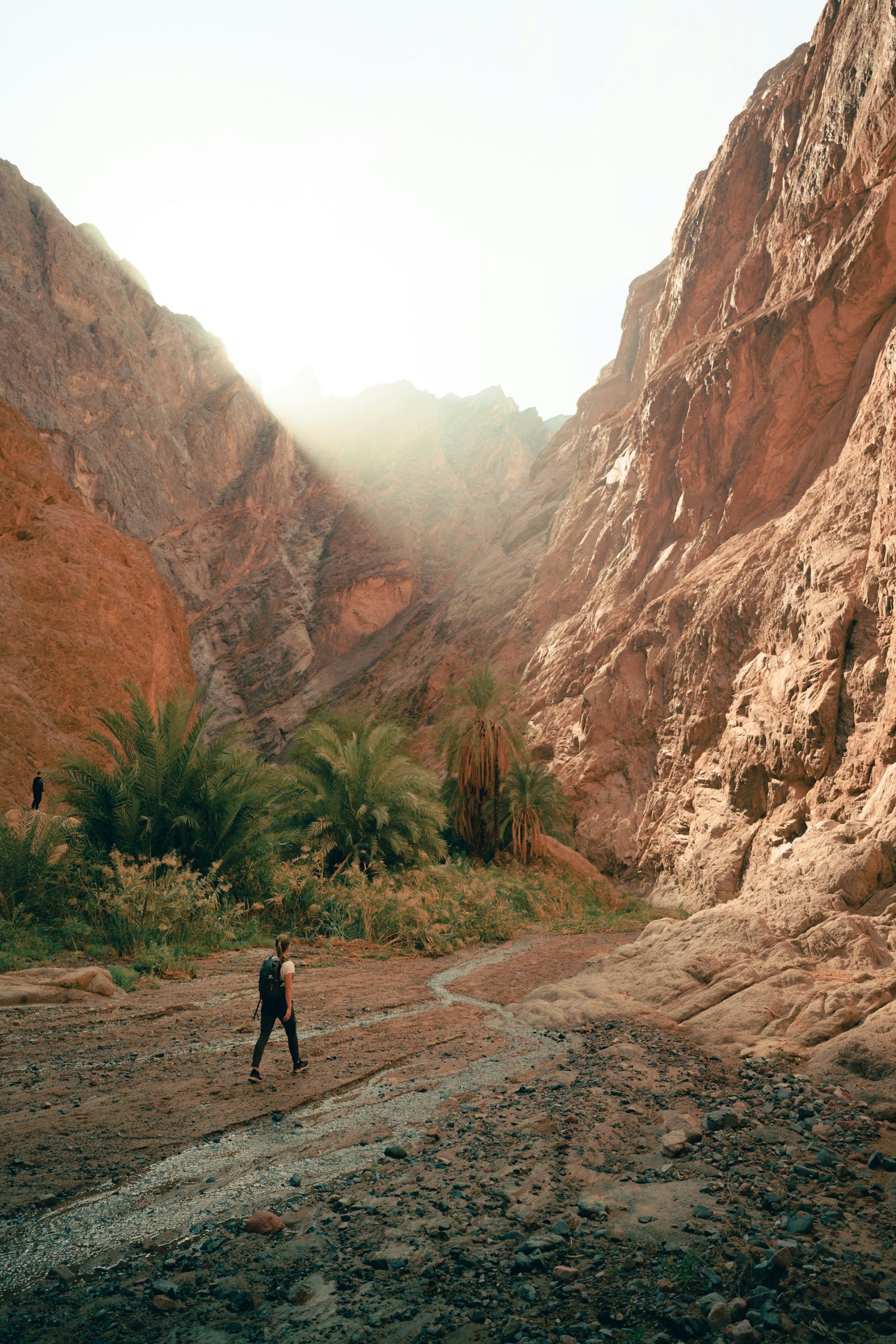
In recent years, the concept of mindfulness has permeated various aspects of our lives, offering a pathway to a more centered and thoughtful existence. This philosophy of being present in the moment and aware of one’s thoughts and surroundings has found a natural ally in outdoor activities. As humans seek connection with nature, it becomes increasingly important to engage with the environment in a way that is both respectful and harmonious. In this article we have tried to cover the art of mindful movement through nature, emphasizing how we can navigate our planet’s diverse ecosystems without disturbing its inhabitants.
Cover photo by NEOM
The Essence of Mindful Movement
Mindful movement involves not only being aware of one’s physical movements but also the mental and emotional states that accompany them. It is a practice that blends intentional physical activity with meditation, allowing for a deepened sense of connection to our surroundings. When we apply this mindfulness to outdoor activities, we transform our interaction with nature from a passive experience into an active, respectful engagement.
Understanding Our Impact
Before venturing into nature, it’s crucial to recognize the impact human presence can have on ecosystems. Even the most minimalist of hikers leaves a trace through compressed paths, microplastics, or even the act of observing wildlife. The goal of mindful movement is to minimize this impact, ensuring that our activities do not disrupt the natural balance for other species or future visitors.
Preparing for Responsible Exploration
Before stepping into the wilderness, preparation is key. This involves:
1. Research. Understand the environment you’re entering. Knowledge of local flora and fauna, terrain, weather patterns, and human activity can guide your movements to be less intrusive.
2. Packing. Carry only what you need and ensure all items are essential for safety and survival. Leave no trace by avoiding single-use plastics and packing out all waste.
3. Mindset. Approach the journey with a sense of respect and curiosity rather than entitlement or dominance. This mental preparation sets the tone for your actions.
On the Trail: Navigating with Care
When on the trail, mindful movement dictates how we interact with the environment. Here are some practices to consider:
1. Stay on Designated Paths. If available, use established trails to minimize your impact on the soil and plant life. This helps prevent erosion and preserves the natural beauty for all to enjoy.
2. Tread Lightly. Walk with care, placing your feet gently on the ground rather than stomping. This approach reduces soil compaction and disturbance to organisms living in the soil.
3. Observe Wildlife from a Distance. The presence of humans can cause stress or alter the natural behaviors of animals. Use binoculars or a zoom lens to enjoy wildlife without encroaching on their space.
4. Be Aware of Sound. Loud noises can travel far in open spaces and disrupt animals, especially those that are sensitive to human activity. Speak softly, and if you’re using electronic devices, keep the volume low.
Camping with Consciousness
When camping, mindful movement extends to selecting a campsite and interacting with the environment:
1. Choose Existing Sites. Use established campsites to prevent the creation of new paths or disturbance in pristine areas.
2. Leave No Trace. Follow the Leave No Trace principles to ensure your camp does not leave a footprint. This includes disposing of waste properly, not washing in streams, and keeping campfires small and contained.
3. Respect Wildlife. Store food securely to avoid attracting animals. If you encounter wildlife, give them space and do not feed them.
4. Minimize Light Pollution. Use dimmed lights at night to preserve the natural darkness and reduce the risk of disturbing nocturnal animals.
Waterways: A Delicate Balance
Water bodies are vital ecosystems that require special attention. When moving around water, consider these guidelines:
1. Avoid Pollution. Never dispose of anything other than biodegradable waste in natural waters. This includes pharmaceuticals, personal care products, and cleaning agents.
2. Fish and Aquatic Life. If you fish, do so responsibly and with consideration for the species’ health and population dynamics. Catch and release practices should be followed to minimize impact.
3. Shoreline Impact. When walking along a shoreline, avoid stepping on plants or disturbing sediment that supports aquatic life.
The Ethical Photographer
In our quest to capture the beauty of nature, it’s easy to lose sight of our impact. As an ethical photographer:
1. Disturbance Minimization. Approach wildlife with care and maintain a respectful distance. Use a telephoto lens to capture images without disturbing the subject.
2. Respect for Subjects. Avoid staging or manipulating scenes to get ‘the shot.’ This includes moving animals or altering natural settings.
3. Sustainable Practices. Invest in gear that is durable and reduces waste, such as rechargeable batteries and memory cards.
Mindful Movement Beyond the Trail
Mindful movement isn’t just for traditional outdoor enthusiasts. It applies to urban environments, parks, and even our own backyards. The principles of respect, awareness, and minimal impact are universal and can be applied anywhere humans and nature coexist.
The Ripple Effect of Mindfulness
The practice of mindful movement has a ripple effect that extends beyond the immediate environment. It fosters a deeper appreciation for nature, encourages stewardship, and inspires others to follow suit. As more individuals adopt this approach, the cumulative impact can lead to significant conservation efforts and policy changes.
Cultivating a Mindful Community
Mindfulness in movement also involves educating and inspiring our community. Share your knowledge with fellow adventurers, participate in local conservation initiatives, and advocate for protected areas. By fostering a community that values mindful interaction with nature, we can collectively ensure its preservation for future generations.
Conclusion: The Path Forward
Mindful movement through nature is not just about reducing our impact; it’s about cultivating a relationship with the natural world that is grounded in respect, awareness, and ethical behavior. As we navigate the paths less traveled or walk amidst the familiar haunts of our national parks, let us do so with intention and care. By embracing this philosophy, we not only preserve the integrity of nature but also enhance our own well-being and connection to the Earth.
In closing, remember that every step you take in the natural world is an opportunity to leave it better than you found it. Whether you’re a seasoned hiker or a casual stroller, your actions contribute to the larger narrative of human interaction with nature. Choose to be a part of the story that honors and protects our planet’s beauty and biodiversity. Embrace mindful movement as a way of life, and let your journey through nature be one of harmony, respect, and profound connection.


